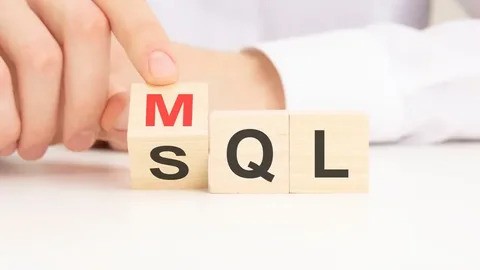How MQLs Fit into the Sales and Marketing Funnel

The sales and marketing funnel is a strategic roadmap that guides potential customers from initial awareness to final purchase. Within this journey, marketing qualified leads (MQLs) serve as a vital inflection point—one that connects broad marketing efforts with focused sales activity. By understanding where MQLs fit and how they function, businesses can align their teams, sharpen their strategies, and increase conversion rates. Here’s a look at the essential role MQLs play from the top to the bottom of the funnel.
Top of the Funnel: Building Awareness
The funnel starts wide. At this stage, the goal is exposure—getting your brand in front of as many people as possible. Marketing teams use content, social media, advertising, events, and SEO to capture attention and generate raw leads. These are the individuals who’ve clicked an ad, visited a website, or watched a video.
At this point, MQLs haven’t emerged yet. The leads collected are unqualified—some may never return. The goal is simply to draw people in and begin the process of engagement. For example, a fitness brand might see 1,000 visitors from a viral Instagram post. These visitors are potential leads, but their intent remains unknown.
Middle of the Funnel: Identifying and Nurturing MQLs
As leads engage more deeply, the funnel narrows. This is the consideration stage, where MQLs begin to take shape. A marketing qualified lead is someone who has demonstrated clear interest through specific behaviors—downloading an eBook, attending a webinar, or filling out a contact form.
These signals of engagement suggest that the lead is evaluating your offering more seriously. Marketing uses these indicators to flag them as MQLs, focusing nurturing efforts on these high-potential contacts.
For example, a SaaS company might generate 500 leads from a content campaign, but only 100 download a product guide and attend a webinar. These 100 would be classified as MQLs, now subject to further targeted communications designed to guide them toward a sales conversation.
The MQL Qualification Criteria
MQLs are defined by both intent and fit:
- Intent refers to behaviors such as multiple page visits, content interactions, or form submissions.
- Fit relates to attributes like job title, company size, or geographic region.
Together, these elements help marketing teams determine which leads are worth advancing. For a B2B business, an MQL might be a procurement manager from a mid-sized company who has visited your pricing page and requested a product demo. For an e-commerce retailer, it could be a user who added items to their cart and subscribed to email updates.
These qualifications are specific to each business, and clarity here ensures both marketing and sales are on the same page.
Transition Point: From MQL to SQL
The handoff from marketing qualified lead (MQL) to sales qualified lead (SQL) is where collaboration between teams becomes crucial. Not every MQL is immediately ready for a sales conversation. Some require further nurturing—through drip email campaigns, retargeting, or personalized content—until they hit a defined threshold of readiness.
When that moment comes—such as requesting a quote, scheduling a meeting, or indicating budget availability—they’re passed to the sales team. A clear agreement on this threshold ensures that the sales team receives high-quality leads, and that marketing isn’t prematurely pushing unready prospects.
For example, a consulting agency might only consider a lead ready for sales after they’ve downloaded two case studies and requested a free consultation. This structure keeps the pipeline efficient and prevents wasted effort.
Boosting Funnel Efficiency
MQLs bring structure to the funnel’s middle, helping filter out low-potential leads and elevate those who are most likely to convert. This improves overall funnel performance:
- Better lead prioritization: Sales focuses only on leads with meaningful engagement.
- Higher conversion rates: MQLs convert more frequently than raw leads—often by a factor of 5 to 10.
- Resource optimization: Marketing spends less nurturing leads that won’t move forward.
Consider a $5,000 campaign that generates 300 leads. Without filtering, sales might waste time on all 300. With MQL tagging, only the 60 most promising are passed forward. If those 60 convert at 10%, the return on investment improves dramatically.
Measuring the Impact of MQLs
To fully understand how MQLs are performing in your funnel, track key metrics:
- MQL-to-SQL conversion rate: How many MQLs become sales-ready?
- Cost per MQL: What are you paying to generate a qualified lead?
- Revenue per MQL: What’s the average value of a converted MQL?
For example, a company might spend $2,000 to generate 50 MQLs. If 10 convert into customers worth $1,000 each, that’s a $10,000 return—proof that MQLs drive high-value outcomes. These insights guide future decisions, such as where to allocate ad spend or how to adjust content strategy.
Common Pitfalls and How to Avoid Them
While MQLs enhance funnel performance, they come with challenges:
- Loose definitions can result in low-quality leads being sent to sales.
- Overly strict criteria may overlook prospects with potential.
- Poor data quality and siloed systems can lead to tracking issues or misaligned handoffs.
To prevent these issues:
- Revisit and update your MQL criteria regularly—especially after product updates or shifts in the market.
- Ensure marketing and sales teams meet often to realign strategies and expectations.
- Conduct CRM audits to verify data accuracy and improve lead scoring models.
The Post-Sale Impact of MQLs
The funnel doesn’t stop at the point of sale. Love2Love.lv High-quality MQLs tend to become high-value customers, staying longer and spending more. In SaaS, for instance, users who engaged with multiple resources before purchase are more likely to renew or upgrade later. For retail, MQLs who received personalized content may become brand advocates, referring others and generating repeat business.
This reinforces the value of a strong MQL strategy—not just for conversion, but for long-term retention and customer lifetime value.
MQLs as the Funnel’s Linchpin
MQLs serve as a structural pillar within the sales and marketing funnel. They refine the broad influx of interest into a focused stream of potential, aligning marketing’s reach with sales’ precision. By clearly defining, measuring, and optimizing your MQL process, you create a seamless experience for leads and a more productive pipeline for your business.
When MQLs are implemented effectively, they don’t just improve the middle of the funnel—they amplify every stage, from acquisition to advocacy. In that way, MQLs are more than a metric—they’re the engine of a smarter, more synchronized funnel.



